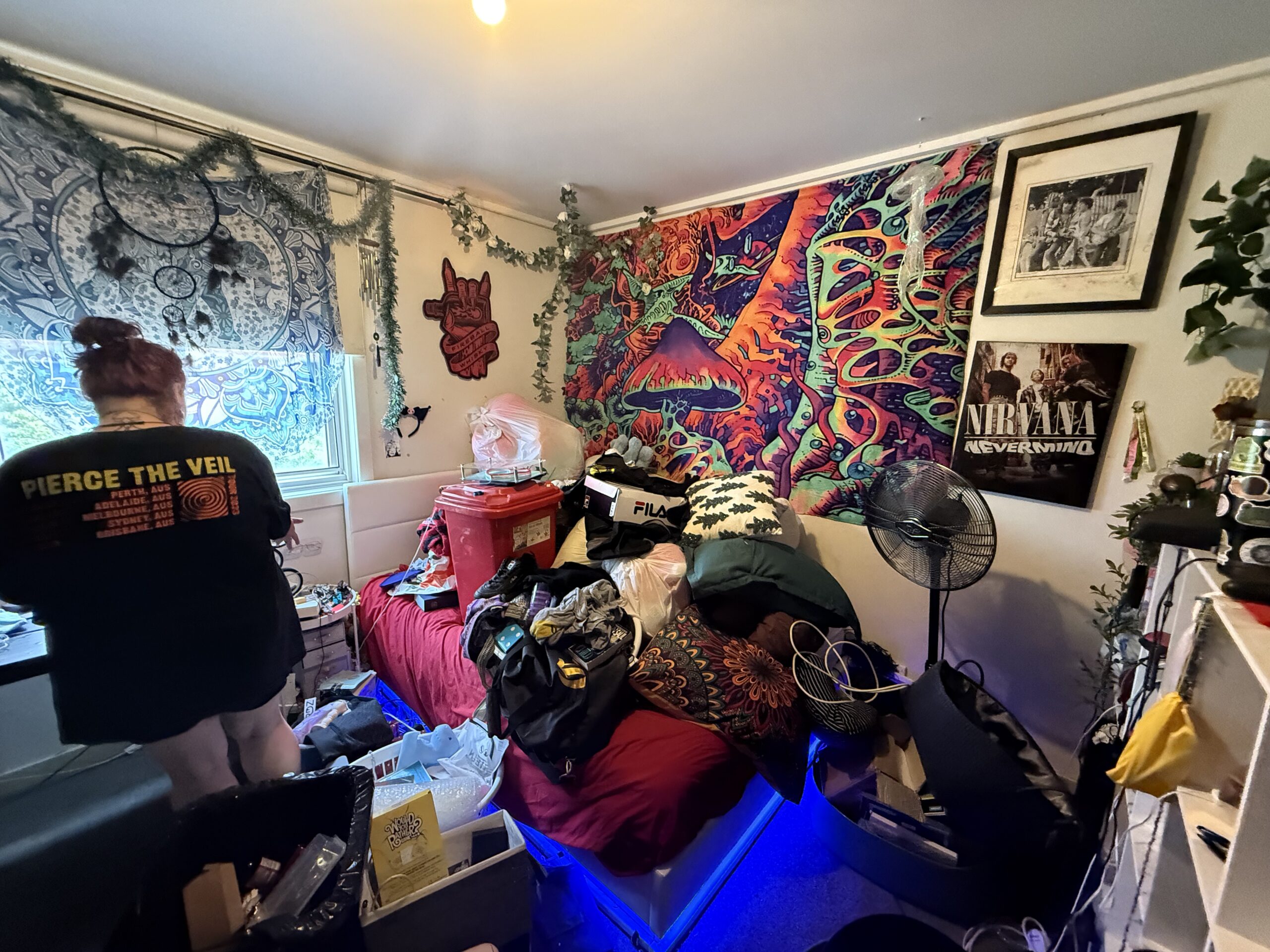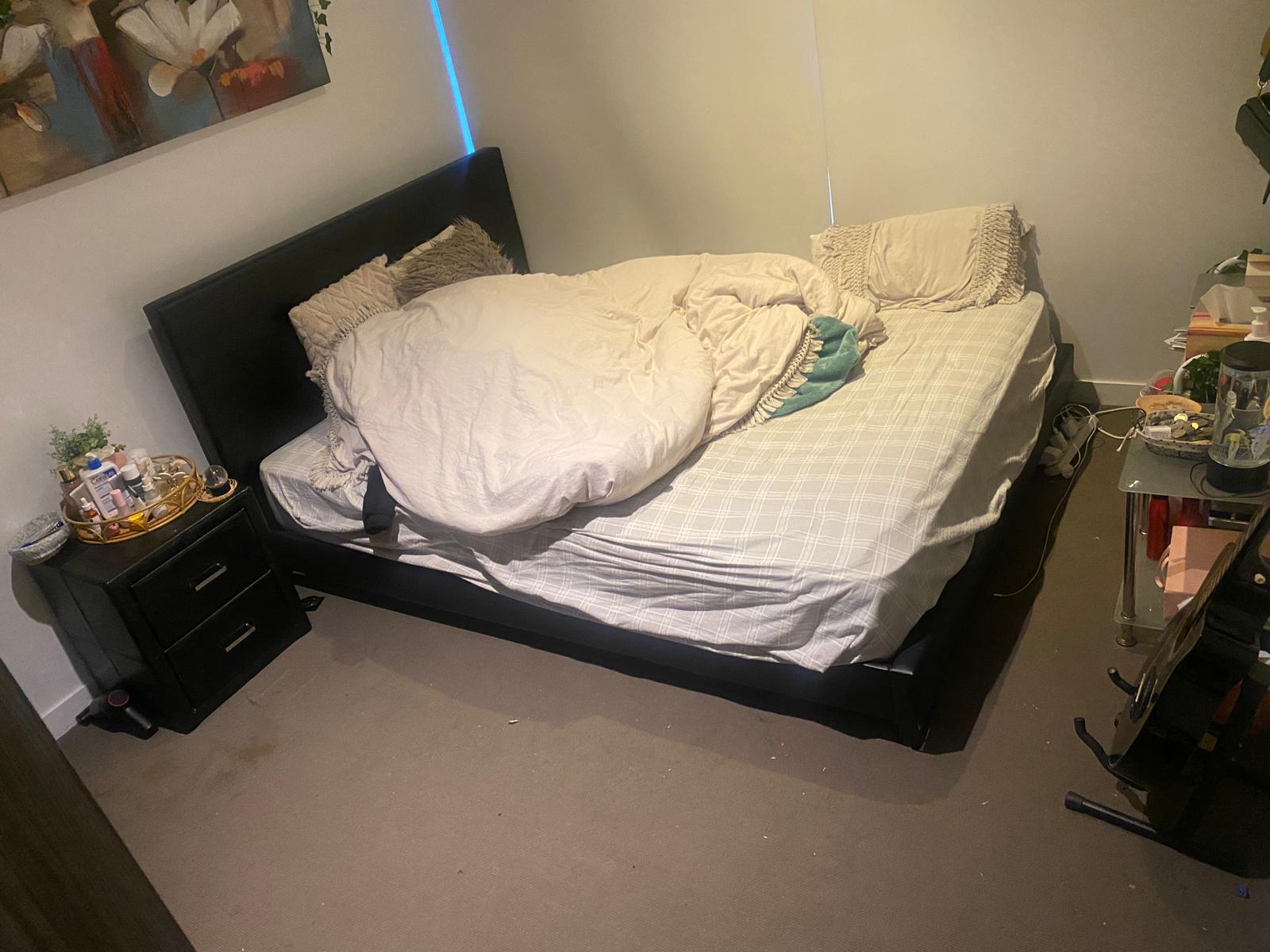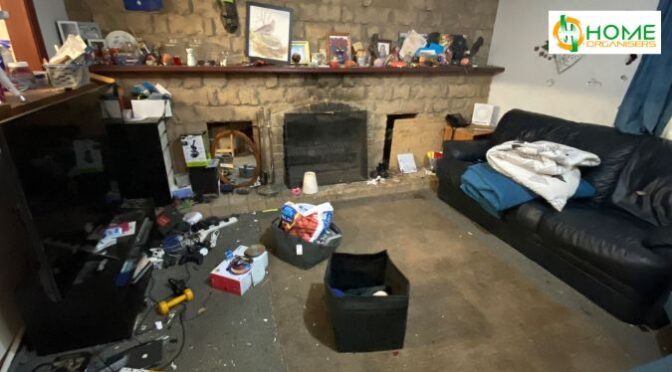In homes designed for Supported Independent Living (SIL) and Specialist Disability Accommodation (SDA), keeping the space safe and tidy is more than just a good habit—it’s a requirement. These homes are meant to support people with disability to live as independently as possible, and one of the easiest ways to help achieve that is by making sure the home is clean, clutter-free, and easy to move around in.
But what does clutter have to do with safety and compliance? A lot more than most people think.
In this guide, we’ll explain how a tidy home supports not just SIL home compliance with NDIS standards, but also helps improve health, mental well-being, emotional stability, family harmony, productivity, mood, and even long-term wealth and life quality. All in a way that’s simple, practical, and helpful—because everyone deserves to feel safe and at home where they live.
Safety and NDIS Compliance: Why Clutter Can Be a Big Risk
Let’s start with the basics.
SIL home compliance and SDA housing safety must meet certain safety and accessibility standards. This means:
- Clear walkways for people who use mobility aids
- Easy access to emergency exits
- Safe kitchen, bathroom, and living spaces
- Reduced risk of trips, falls, or fire hazards
Cluttered rooms can block doorways, cover important switches, hide spills, or leave items in walkways. All of these are considered safety risks—and if left unmanaged, they may lead to incidents or even put the provider out of compliance with NDIS requirements.
A clean and well-organised home helps to reduce those risks. It also shows that the provider is taking proactive steps to support the participant’s well-being. It’s not just about avoiding trouble during an audit—it’s about doing what’s right every single day.
Physical Health: Clean Space = Safe Body
Clutter doesn’t just get in the way. It can also be a health risk.
Dust, mould, pet hair, and food spills build up easily in disorganised spaces. Over time, this can cause:
- Allergies
- Breathing problems
- Skin irritation
- Weakened immune systems
People with disability may already have health conditions or sensitivities, so it’s important to make sure their home stays clean and hygienic.
Plus, a tidy home makes it easier for support workers to clean regularly. They can access surfaces, floors, and bathrooms without moving heavy or unnecessary items, which reduces their risk of injury too.
In short: clear the clutter, and you clear the air—literally.

Mental Health and Emotional Well-being
A cluttered space often leads to a cluttered mind.
For people with disability—especially those with cognitive or sensory challenges—a messy, loud, or disorganised space can be overwhelming. It may cause:
- Anxiety
- Confusion
- Stress
- Difficulty focusing
- Trouble sleeping
On the other hand, a clean and organised home can have a calming effect. When everything has a place, and there’s space to breathe, it becomes easier to relax and feel in control.
Routine becomes more manageable. Self-care becomes easier. Stress levels drop. And the person living in the space feels respected and supported.
This emotional safety is just as important as physical safety in SIL home compliance and SDA housing safety environments.
Independence and Confidence
The whole purpose of SDA housing safety and SIL home compliance is to help people with disability live more independently.
But clutter can get in the way.
When spaces are crowded or messy, it becomes harder to find things, harder to move around, and harder to complete daily tasks. This can reduce a person’s sense of control and lead to increased reliance on carers or support workers.
On the other hand, a tidy and clearly organised space encourages participation. It allows the resident to:
- Find their clothes and belongings
- Cook simple meals
- Clean up after themselves
- Follow daily routines
- Take pride in their space
This builds confidence and skills for life. Every small step counts.
Family and Carer Relationships
Families of people with disability want to know that their loved one is safe, supported, and living in a respectful environment.
When they walk into a messy, cluttered SIL or SDA home, it can lead to:
- Worry about safety and hygiene
- Frustration with care providers
- Loss of trust
- Increased stress and tension
On the other hand, walking into a clean, tidy, and welcoming space reassures them that their loved one is well looked after. It creates a positive environment for family visits and strengthens relationships between the participant, their family, and their care team.
And when carers work in an organised space, they’re better able to do their jobs, leading to better service and less stress for everyone involved.

Productivity and Routine
Clutter is a distraction. It makes it harder to focus and easier to lose track of time.
In SIL home compliance and SDA housing safety settings, routines are incredibly important. Whether it’s preparing for the day, attending appointments, or completing daily living tasks, staying on schedule matters.
A clean and clear home helps make those routines easier to follow. Participants can move from one activity to the next without unnecessary delays or confusion.
Plus, carers and support workers can work more efficiently when they’re not navigating around piles of belongings or searching for misplaced items.
More order = more calm = more productivity.
Mood and Motivation
Imagine waking up and seeing a bright, clean space. You can see the floor. The kitchen bench is clear. Your clothes are folded. There’s no bad smell, no mess to trip over.
Now imagine waking up and seeing clutter everywhere—dirty dishes, clothes on the floor, no space to walk, things you don’t use piling up in every corner.
Which day would start off better?
A tidy home lifts mood. It helps people feel positive and hopeful. It also makes it easier to invite friends or family over, creating a sense of pride and belonging.
Small changes in the environment can lead to big changes in attitude. And in SDA housing safety and SIL home compliance homes, those changes matter deeply.
Wealth and Long-Term Costs
Yes, clutter can cost money.
When things are messy or disorganised, it’s easy to:
- Lose important documents
- Break or damage items
- Buy duplicates of things already owned
- Delay or miss important appointments
All of this adds up.
For SDA housing safety and SIL home compliance providers, non-compliance due to unsafe environments can result in penalties, lost funding, or damaged reputation.
Decluttering is a low-cost, high-value way to manage risk and support long-term financial sustainability—for both the resident and the service provider.
An organised home is also easier and cheaper to clean and maintain over time.

Personal Dignity and Quality of Life
No one wants to live in a space that feels chaotic, unsafe, or dirty. And people with disability are no exception.
Decluttering helps create homes that:
- Reflect the resident’s identity
- Feel warm and welcoming
- Support comfort, safety, and happiness
It’s not about making things “perfect.” It’s about creating a space that feels like home, where the person feels respected and has control over their environment.
That’s the foundation of dignity—and dignity is essential to quality of life.
How to Start Decluttering in SIL and SDA Homes
If you’re a provider, support coordinator, or family member, here’s how to begin creating safer, clutter-free spaces:
Start small.
Choose one room or area to focus on first. Maybe it’s the kitchen bench, hallway, or bedroom floor.
Involve the resident.
Respect their preferences and choices. Ask what’s important to them and what can be let go.
Sort with a purpose.
Use clear categories like keep, donate, bin, and store. Label boxes and shelves for easy access later.
Think safety.
Make sure walkways are clear, surfaces are clean, and essential items are within reach.
Keep it going.
Decluttering is not a one-off task—it’s a regular habit. Schedule seasonal reviews or weekly tidy-ups.
Get help.
Professional organisers who understand disability support and hoarding risk management can work with care teams to create systems that last.
Why This Matters More Than Ever
As the NDIS continues to grow and evolve, expectations for safe and compliant homes are only increasing. Providers who are proactive about risk management will be better positioned to thrive, retain staff, and support participants in meaningful ways.
And more importantly, residents in SIL home compliance and SDA housing safety homes deserve spaces where they feel:
- Safe from physical harm
- Seen and respected
- Supported to live their best life
Decluttering isn’t about minimalism or neatness. It’s about creating space for safety, growth, and independence.
Final Thoughts
A clutter-free home is more than just a pretty picture—it’s a powerful tool for improving lives.
For SIL home compliance and SDA housing safety homes, decluttering supports:
- Safety and NDIS compliance
- Physical and mental health
- Independence and dignity
- Stronger relationships
- Smoother routines
- Better moods
- Cost savings
- Higher quality of care
- Hoarding risk management
It’s one of the simplest and most impactful steps you can take to support people with disability in living well.
So whether you’re a support provider, coordinator, family member, or resident—remember this:
Clear space. Clear mind. Safer home. Better life.
Ready to create a safer, clutter-free home? Contact us today on 03 8583 9103, email nancy@homeorganisers.com.au, or visit homeorganisers.com.au to get started.
Case Study
Case Study 1: Decluttering for SDA Housing Safety in a Shared Accommodation in Melbourne
Client: SDA Provider, Melbourne
Resident Profile: 32-year-old male with an acquired brain injury
Challenge: Repeated incidents of tripping and difficulty navigating shared spaces
Service Provided: Decluttering and home safety reorganisation
Background
An SDA provider in Melbourne reached out with growing concerns about SDA housing safety after a resident experienced multiple near-falls within the living room and hallway. The participant, Mark*, had mobility issues and relied on a walker to get around. Over time, furniture, personal belongings, and support equipment had filled the common areas, making the space hard to navigate safely.
An internal compliance review raised red flags about possible environmental hazards. With an upcoming NDIS audit on the horizon, the provider needed to act quickly—not just for regulatory reasons, but to better support Mark’s day-to-day independence and safety.
Approach
Home Organisers worked closely with the SDA provider, support coordinators, and Mark’s support team to:
- Conduct a full safety assessment of the common areas
- Map out high-risk zones, particularly cluttered walkways and blocked exits
- Respectfully involve Mark in identifying which items were essential, which were sentimental, and which could be removed or stored safely
- Implement storage solutions for support equipment
- Rearrange furniture to improve movement flow
- Schedule quarterly check-ins to support ongoing SDA housing safety
Outcome
- Mark was able to move around freely with his walker without risk
- Emergency exit paths were cleared and clearly marked
- The provider passed their NDIS audit with no safety flags
- Mark’s mood improved significantly, saying he felt “more in control and less boxed in”
- The support staff noted fewer incidents and more time for care duties instead of tidying
This case showed how proactive hoarding risk management and thoughtful decluttering can prevent harm, reduce provider risk, and restore dignity to residents.
Case Study 2: SIL Home Compliance Through Decluttering for a Family-Based Household
Client: Family-based SIL home, regional Victoria
Resident Profile: 55-year-old female with psychosocial disability and PTSD
Challenge: Hoarding tendencies, safety hazards, and emotional resistance to change
Service Provided: Trauma-informed decluttering and compliance-focused organising
Background
Sarah*, a long-term resident in a family-based SIL home, was referred to Home Organisers through a concerned support coordinator. Over the past five years, her home had become increasingly cluttered with books, craft supplies, unopened parcels, and second-hand items.
Her personal hoarding habits had begun spilling into shared areas, creating tension with staff and presenting safety concerns like blocked fire exits and inaccessible bathrooms. The coordinator flagged potential SIL home compliance issues, particularly regarding safety and hygiene, but the deeper challenge was emotional—Sarah had deep attachments to her belongings and resisted any change.
Approach
Understanding the emotional layers of hoarding risk management, our team took a trauma-informed approach:
- Built trust with Sarah over multiple visits before beginning the hands-on work
- Involved her in every decision, ensuring she retained control over the process
- Reframed the process as “making space for the life she wants now”
- Introduced labelling systems and visual prompts to reduce anxiety
- Trained support workers to maintain the new systems and provide ongoing encouragement
Outcome
- Bathroom and kitchen areas were cleared and made fully accessible
- 20+ boxes of unused items were sensitively removed or rehomed
- Fire safety risks were eliminated
- Sarah began participating more in social activities and even hosted her first visitor in years
- The home passed its annual safety inspection with flying colours
This case highlights how SIL home compliance can be achieved through compassionate, collaborative decluttering that supports both mental health and physical safety.
FAQs on Creating Safe, Compliant, and Clutter-Free SIL & SDA Homes
- How Can I Help My Loved One Feel Comfortable While Decluttering Their SDA Home?
Explores the emotional side of decluttering with someone living with disability and how to make the process respectful, empowering, and participant-led.
- What Are the Hidden Risks of Clutter in Supported Independent Living (SIL) Homes?
Breaks down the less obvious dangers of clutter—like fire hazards, hygiene issues, and blocked mobility paths—and how to prevent them.
- My Client’s SIL Home Is Full of Stuff—Where Do We Even Start?
A practical, step-by-step guide for support coordinators, carers, or family members who feel overwhelmed by the idea of starting the decluttering process.
- Is It Possible to Declutter Without Making the Person Feel Like They’re Losing Control?
Focuses on trauma-informed, consent-based decluttering practices that preserve dignity and autonomy for people with disability.
- Can Decluttering Really Help with NDIS Audits and SIL Home Compliance?
Answers how a clutter-free, well-organised environment contributes to meeting safety and compliance standards required by the NDIS.
- How Do I Talk About Hoarding Behaviours Without Causing Shame?
A gentle approach to discussing hoarding risk management in SDA and SIL homes while maintaining respect and building trust with the resident.
- Why Is My Son Anxious in His SDA Home—and Could Clutter Be the Cause?
Explores the link between mental health, overstimulation, and environmental stressors in SDA housing environments.
- What Role Does Decluttering Play in Creating Safer Homes for People with Disability?
Educates readers on how decluttering goes beyond appearances—it reduces falls, improves access, and helps create safer day-to-day living.
- How Often Should We Declutter an SDA or SIL Home to Stay Compliant and Safe?
Provides a realistic, proactive timeline and checklist for families or providers to keep homes organised without overwhelming the participant.
- What Can a Professional Decluttering Service Do That We Can’t Manage Ourselves?
Clarifies the value of engaging a trained, NDIS-aware professional organiser who understands the unique challenges in disability support settings.


